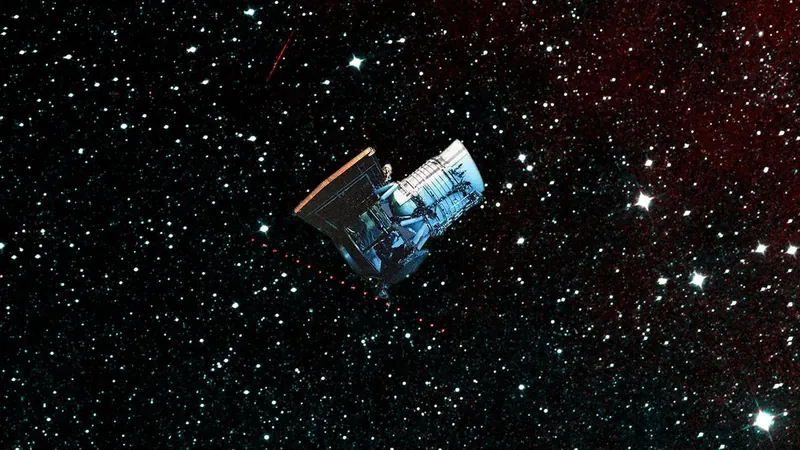
NASA's Iconic NEOWISE Spacecraft Meets Fiery End: A Remarkable Journey Concludes
2024-11-04
Author: Ming
NASA's Iconic NEOWISE Spacecraft Meets Fiery End: A Remarkable Journey Concludes
NASA's enduring NEOWISE spacecraft, a trailblazer in the search for asteroids, has met a fiery doom after 15 years of groundbreaking exploration. This venerable asteroid hunter disintegrated as it re-entered Earth's atmosphere on Friday, November 1, as was initially anticipated, marking the end of a remarkable chapter in space science.
The space agency confirmed the spacecraft's destruction via a post on social media platform X (formerly Twitter) on Saturday, November 2. While NEOWISE may no longer be operational, NASA's quest to detect rogue asteroids continues with a network of telescopes on Earth and the imminent launch of a successor spacecraft.
Originally deployed as the Wide-field Infrared Survey Explorer (WISE) in December 2009, NEOWISE was launched aboard a United Launch Alliance Delta II rocket. Initially, its mission involved surveying celestial bodies in infrared wavelengths, during which it made astonishing discoveries, such as identifying the most luminous galaxies and uncovering hidden black holes. Within its first year, WISE documented a plethora of cosmic phenomena, enriching our understanding of the universe.
After its coolant supply ran out in February 2011, engineers transitioned WISE into hibernation, anticipating the end of its mission. However, a fortunate turn of events led to the spacecraft's reactivation as NEOWISE, refocusing its efforts on near-Earth objects (NEOs), particularly asteroids. This repurposing proved serendipitous; Amy Mainzer, NEOWISE's principal investigator, noted in a 2019 briefing that the spacecraft excelled at detecting asteroids.
Throughout its illustrious second act, NEOWISE exceeded all expectations, culminating its mission as a treasure trove of data that scientists will analyze for years to come. Joseph Hunt, NEOWISE's final project manager at NASA's Jet Propulsion Laboratory (JPL), expressed pride in the spacecraft’s legacy, stating it has equipped the scientific community with invaluable insights.
The spacecraft's demise was primarily attributed to the solar maximum, a peak phase in the Sun's 11-year activity cycle characterized by heightened solar flares and coronal mass ejections. This increased solar activity caused the atmosphere to expand, gradually pulling NEOWISE closer to Earth and ultimately leading to its incineration during re-entry. With no propulsion system to aid its adjustment, NEOWISE was unable to escape its fate.
As NEOWISE fades into history, astronomers and space enthusiasts look forward to the future of asteroid exploration with a new generation of telescopes and spacecraft. The scientific community is eager to utilize the wealth of data provided by NEOWISE, as they prepare for what could be an exciting new era of discovery in understanding our cosmic neighborhood. Stay tuned for developments on NASA's upcoming missions and the endless possibilities that lay ahead in our quest to uncover the secrets of the universe!

 Brasil (PT)
Brasil (PT)
 Canada (EN)
Canada (EN)
 Chile (ES)
Chile (ES)
 Česko (CS)
Česko (CS)
 대한민국 (KO)
대한민국 (KO)
 España (ES)
España (ES)
 France (FR)
France (FR)
 Hong Kong (EN)
Hong Kong (EN)
 Italia (IT)
Italia (IT)
 日本 (JA)
日本 (JA)
 Magyarország (HU)
Magyarország (HU)
 Norge (NO)
Norge (NO)
 Polska (PL)
Polska (PL)
 Schweiz (DE)
Schweiz (DE)
 Singapore (EN)
Singapore (EN)
 Sverige (SV)
Sverige (SV)
 Suomi (FI)
Suomi (FI)
 Türkiye (TR)
Türkiye (TR)
 الإمارات العربية المتحدة (AR)
الإمارات العربية المتحدة (AR)